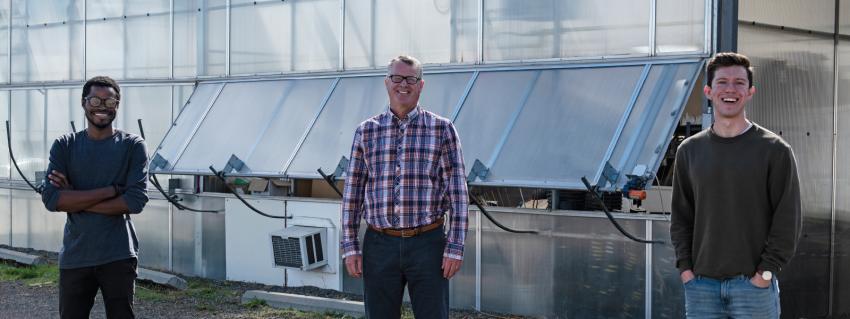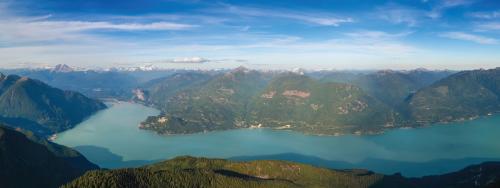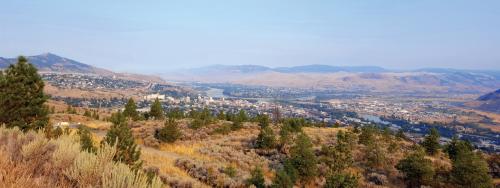That’s why we’re partnering with Thompson Rivers University (TRU) on an invasive plant species study in Kenna Cartwright Park. When we’re ready to restore our worksites in the park—as part of our Inland Gas Upgrades project—we’ll restore them with native plants. The study will help us understand which native species to plant, as well as when and where we should plant them, to make them more resilient and resistant to invasion by non-native species.
Thompson Rivers University team leads invasive species study
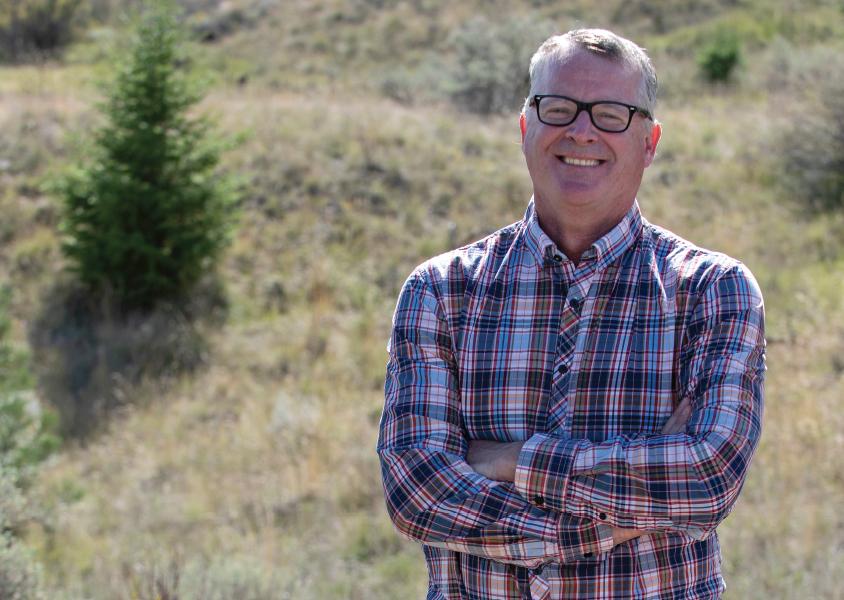
Dr. Lauchlan Fraser, professor and NSERC industrial research chair in ecosystem reclamation at TRU, is the principal investigator on the study. Lauchlan explains that one of the reasons invasive species are so successful at taking hold in new areas is because they’ve arrived in places where the animals and insects that would eat them, and the plant diseases that could harm them, don’t exist. “Most invasive species in BC are from Eurasia,” he says. “They can grow here with the benefit of not being eaten, or otherwise impacted, by their natural enemies.” He adds, “All ‘invasives’ have certain universal plant traits, such as the ability to produce a lot of small seed that can disperse rapidly and travel long distances, that make them competitive and fast growing.”
Some of the invasive species that can be found in Kenna Cartwright Park, and throughout the Kamloops region, include spotted knapweed, cheatgrass, sulphur cinquefoil, yellow toadflax, St. John’s wort, baby’s breath and rush skeletonweed.
Disturbances are opportunities for invasive species to spread
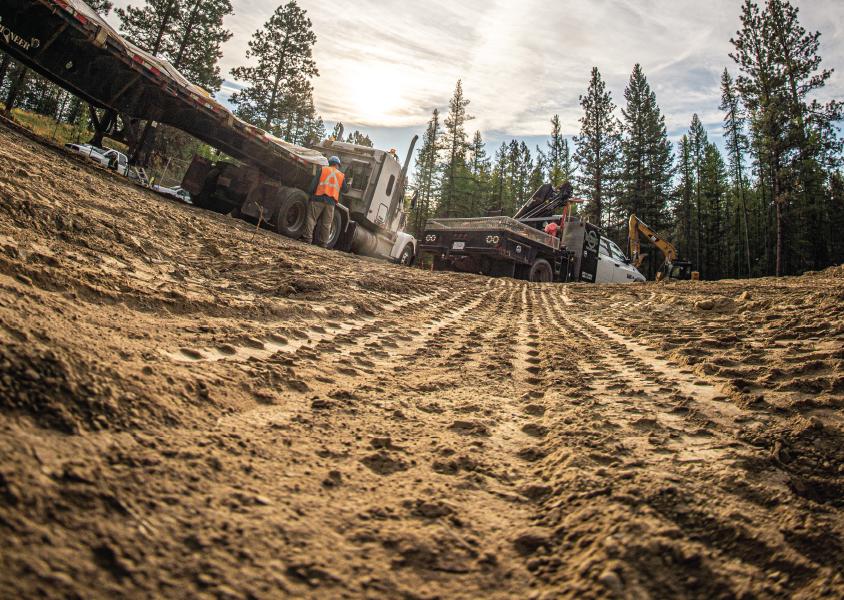
Lauchlan points out that disturbances, both ecological and human, can also help invasive species to flourish. He says, “Severe or changing weather and climate conditions, fires or human impact—such as during an excavation—can create additional opportunities for invasive species. Restoring sites that have been disturbed, for whatever reason, and making them more resilient and resistant to invasion by non-native plant species is really needed.”
Study takes place along FortisBC gas line right of way
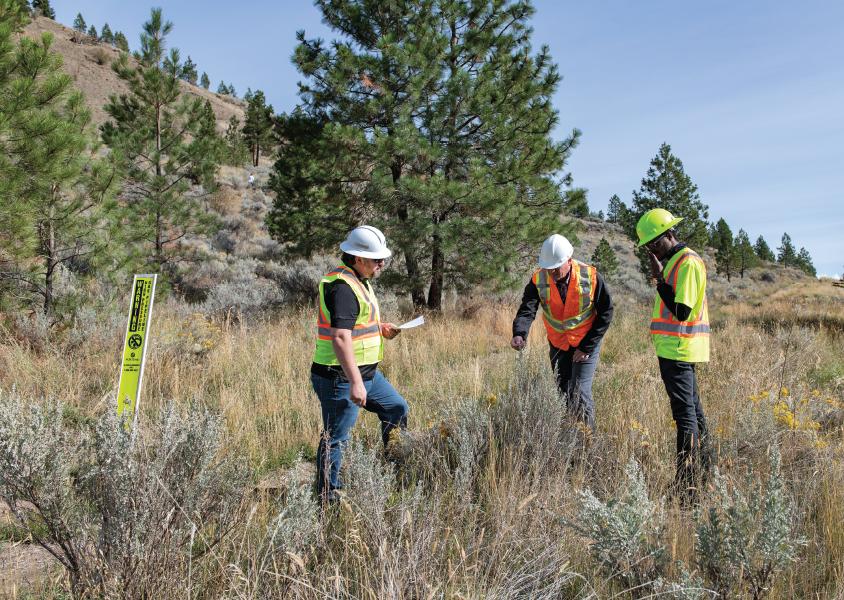
The TRU invasive species study in Kenna Cartwright Park began in September 2020 and will be complete in the fall of 2022, before restoration work begins on our worksites in 2023. The study is primarily under the control of Nate Dungey, a TRU master’s student. Dr. Moro Fajiye, a TRU postdoctoral fellow, is helping with supervision. They’re conducting their research along three plots of land close to the FortisBC right of way.
“The plots we chose are situated at different points along the same elevation gradient as the existing gas line,” says Lauchlan. “There are slightly different plant species at each level. We wanted to capture the different types of plant communities that live along the gradient to expand the generality of our results.”
Plants introduced to mimic ecological development
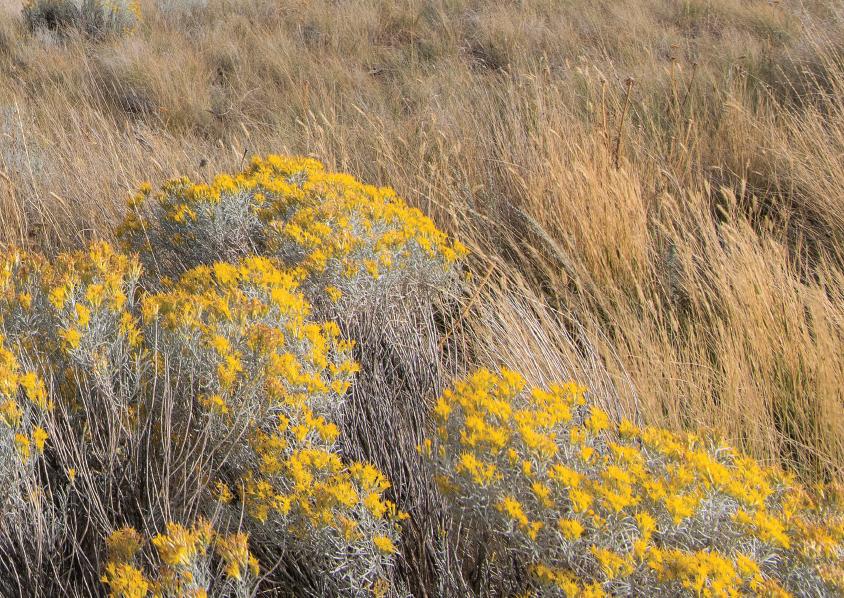
The TRU team applied a theory called assembly rules, or priority effects, to the study. Particular species of plants were selected and introduced to the habitat at an early stage to determine how they will either positively or negatively affect growth or reproduction of plant species that arrive later.
Critical native plants such as pinegrass and sagebrush were planted, as well as plants of local cultural significance such as bluebunch wheatgrass, yarrow and arrowleaf balsamroot. Their introduction to the habitat was timed to mimic natural ecological development, but on an accelerated timeline.
Lauchlan explains, “We’re helping develop a community, but we’re actually manipulating its development to speed up the process.” He stresses that the study is not just about the species of plants, it’s also about some changes they’ve made to the soil. “We’re testing straw matting, to address erosion control, and biochar, to improve the quality of the soil, to see if that helps enhance the development of the plant community and further speed up the success of the restoration,” he says.
Mock gas line installation helps with study
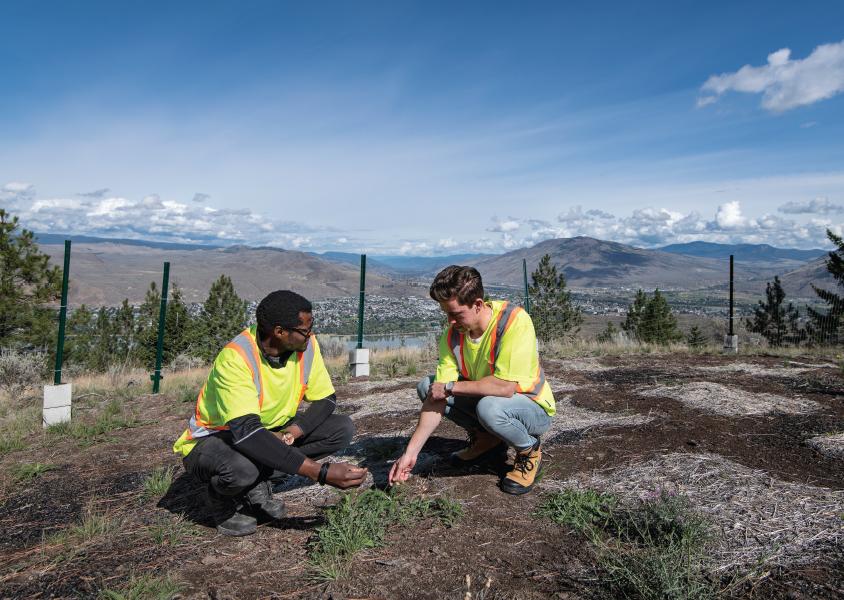
Lauchlan describes the plots of land they’re experimenting with in the park as small, superficial disturbances that don’t accurately reflect the kind of disturbance that the gas line work will cause. “We only cleared vegetation in the park. We weren’t allowed to do any digging. And, the gas line work in the park won’t be complete for another year,” he notes. “The best way to test something is to do it for real, so we decided to set up another study where we could dive into a ‘mock’ gas line laying exercise.”
The TRU team got permission from the university to excavate and lay a section of gas line in an empty field on campus land. A FortisBC crew came in to do the work. “The FortisBC crew laid a section of gas line the way they would on a project site—digging a trench, laying the gas line and covering it up—creating the same kind of disturbance that will occur in Kenna Cartwright Park,” says Lauchlan. “Then, we set up a small restoration trial, duplicating the experiments we’re doing in the park.”
Results will benefit entire region
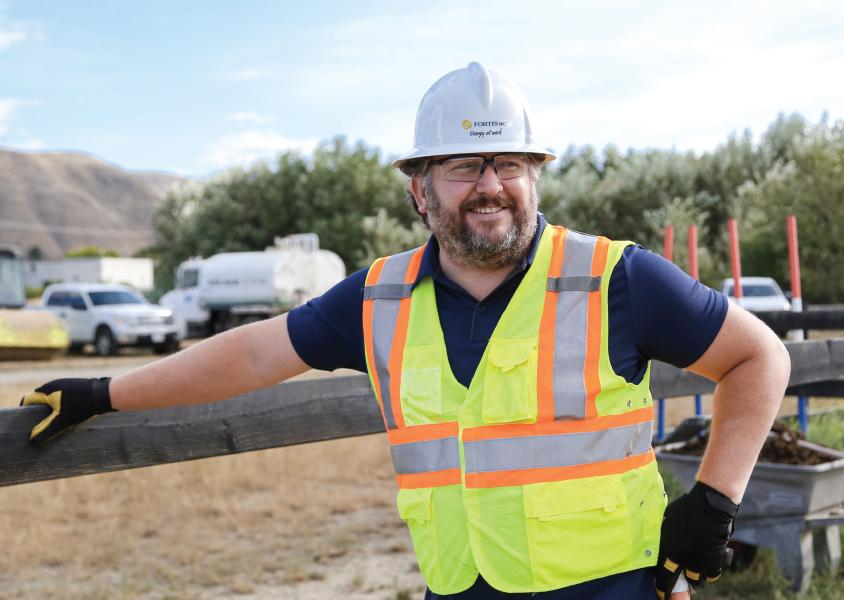
The results of the TRU invasive species study won’t be known for another year but, once they’re available, the learnings will benefit anyone interested in reducing invasive species in the region, including FortisBC.
Matt Mason, community and Indigenous relations manager with FortisBC says funding this study, which is also partially funded through a Mitacs research grant, is important to FortisBC as a way to give back to the Kamloops community. “We thought this was a unique opportunity to support a project involving environmental research and development. It’s something that benefits students at TRU, Kenna Cartwright Park and the greater Kamloops region,” he says. “It will also be a great help to us when it’s time to restore our worksites in the park. Replanting with native plants that are resistant to invasive plant species will take our restoration efforts to another level.”
Lauchlan agrees that the study is an important learning experience for his students, and will have long-lasting benefits for the Kamloops region. “This student-driven study is teaching them to do critical, defensible research,” Lauchlan states. “Once Nate publishes his master’s thesis, the results will be available in government library archives and, of course, the TRU library for other students, companies and organizations to access. The results of the study will help with the future development of diverse, sustainable and functional ecosystem habitat.”
